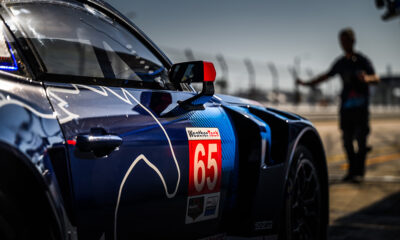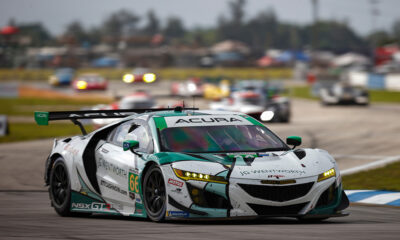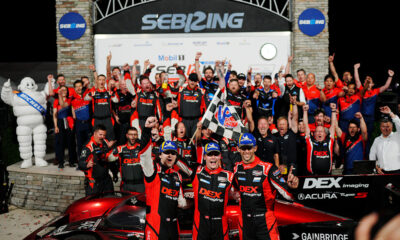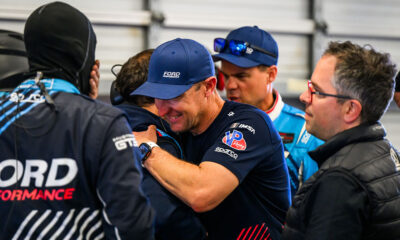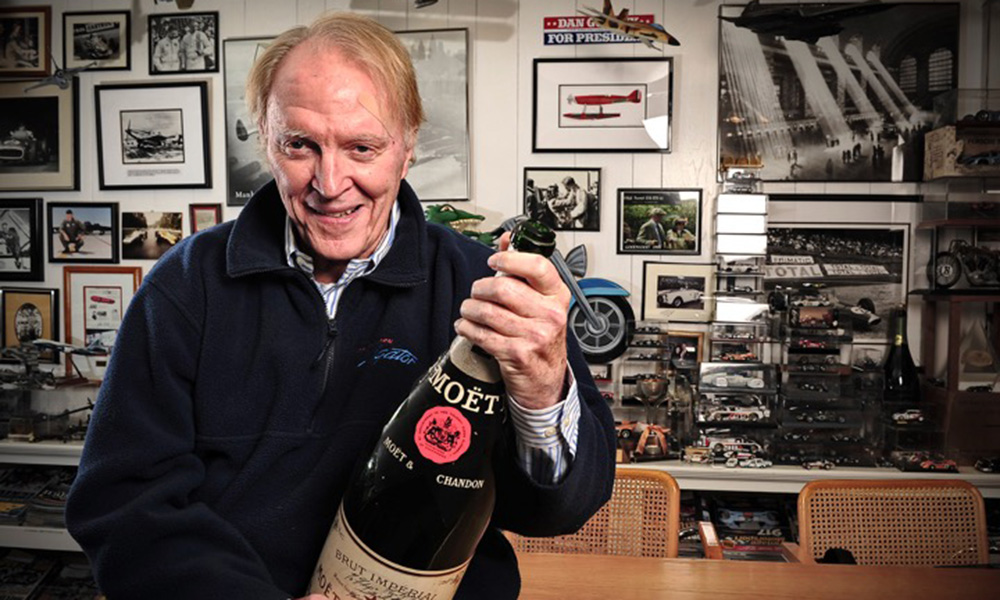
Photo: Richard Dole
Mark Cole looks back at Dan Gurney’s legacy at the 24 Hours of Le Mans. The legendary driver and car builder passed away Sunday at the age of 86.
Much has been made of Dan Gurney’s single-seater career, particularly at the wheel of his own Eagles, but he also had much success as a sports car driver, and not only won Le Mans in 1967 for Ford, but had helped Shelby to its 1965 International GT Championship with the Cobra, finally unseating Ferrari and its 250 GTO.
Gurney had already won the GT category at Le Mans and the Goodwood TT in 1964 with the Daytona Coupe, and at the Targa Florio in the Cobra roadster, making the front cover of that year’s prestigious Automobile Year annual.
The move to Ford’s GT40 program in 1966 saw the creation of the ‘Gurney bubble’ in the roof of the 7-litre Mk II driver’s door to accommodate his 6ft 4in frame, something which other tall drivers were quick to copy.
He finished 2nd with Jerry Grant in that year’s Daytona 24 Hours, and was leading at Sebring six weeks later when engine blew on the final lap; he pushed it over the finish-line, still in second place, but was disqualified for his trouble.
Gurney set a record pole at Le Mans in June, and was leading when a stone pierced his radiator and he had to make a series of stops for water.
The head gasket cried enough at 9am on Sunday morning. But the sister Shelby and Holman & Moody Mk IIs went on to an historic 1-2-3 finish, ending Ferrari’s run of nine outright wins, the last six in a row. Maranello has not won Le Mans outright since.
For 1967, Ford renewed its attack by introducing the slimmer, lighter Mk IV, supported by the uprated Mk IIB, although it would not run in anger until Sebring. For the 1967 Daytona 24 Hours, Ford entered six Mk IIs ran, although all of them suffered transmission failures due to faulty shafts. Only one – that of Bruce McLaren and Lucien Bianchi – finished after all had gearbox changes during the race.
For Sebring, just one Mk IV was entered, but augured well for Le Mans by winning by 12 laps in the hands of McLaren and Mario Andretti.
Gurney had finished Le Mans only once in nine starts, but he had a gut feeling that 1967 was going to be his year. He was sharing the No. 1 Shelby Mk IV with A.J. Foyt, who had never even seen Le Circuit de la Sarthe until race week, and then had run only 10 laps in qualifying, although he had two weeks earlier won the Indy 500.
From the start, Gurney played a waiting game, looking after the brakes and letting the race come to him.
“I decided early on to back off maybe 300 yards before I needed to (for Mulsanne),” he told Preston Lerner (Ford GT, 2016).
“I just let the engine slow down the car to 140 or so, I’m guessing. But that meant it wasn’t really beating up the brakes. I think that was one of the things that helped us finish that race.”
Both Chaparrals were out before mid-distance, one with electrical issues, the other with gearbox failures, and then the Fords went out one by one, two with engine failures and one catching fire, severely burning Mike Salmon.
Lloyd Ruby crashed Holman & Moody’s No. 4 Mk IV after sliding off on oil dropped at Tertre Rouge shortly after 9pm.
But worse was to come: at 3:30 a.m. Sunday, Mario Andretti exited the pits in his Holman & Moody Mk IV after a pad change, and arrived at the Esses to find himself brakeless – he had failed to bed-in the pads.
As he climbed out of his wrecked No. 3 car, badly bruised by the seat belts, Roger McCluskey piled his No. 5 Mk IIB into the wall in avoidance, only to be collected by the Ford France/Holman & Moody Mk IIB of Jo Schlesser.
All four Holman & Moody cars were out, leaving Ford with just two Shelby Mk IVs still running.
Fortunately for the Blue Oval, those two cars were running 1st and 4th, still racing hard with the Ferrari P4s of Scarfiotti/Parkes and Mairesse/Blaton. The McLaren/Donohue MK IV would finish fourth.
For first-timer Foyt in Red One, it was a race he would never forget.
“Dan gave me some pointers and all that, then he ran in the first shift and I got in the second shift, I think I had about 10 laps and when I came into the pits Denis Hulme, who was in another Ford, was leading.
“I knew he’d been out of there for a lot of time, and I followed him for about four or five laps and got lucky enough to get by him. That’s kind of how I learned the course. I went over a rookie and we came back a winner, so I have nothing to prove.”
He even had to run an extra stint in the early hours when Gurney couldn’t be found, “and still Dan laughs about it. I think he was hiding on purpose. I could be wrong, because for me, I didn’t care for running in fog and all that smoke where people were cooking.”
“That story got changed many times,” counters Gurney. “As a matter of fact, I thought I was there on time, but in any case, I had been walking around with my wife. So I don’t know why A.J. came in early.
“But one story that was true was that Mike Parkes in the Ferrari was giving me a hard time in the night even though he was four laps down, catching me under braking each time we got to Mulsanne Corner, flashing his lights then sticking with me until I could pull away again.
“After this happened maybe four times, I pulled off onto the grass at Arnage, and he did the same. After 12 seconds or so, he drove off again, and I rejoined the race. The gap was still four laps at the finish.”
Gurney and Foyt had run further, faster than any car in the long history of Le Mans, covering 3251.57 miles at an average speed of 135.48 mph, pit-stops included. On the podium, the Californian shook the magnum of champagne and sprayed the crowd, starting a new trend that has continued through the years since.
“I never thought about it at the time,” he told this author at the 2012 Goodwood Revival. “Hank the Deuce was there with his new bride, I think on their honeymoon when I started spraying him, I’m not sure he liked it or not, but he was a good sport about it, and we had a wonderful time spraying champagne, AJ and I both. It seemed the right way to finish a perfect weekend.”
It was the first and only all-American victory at Le Mans: an all-American car, prepared by an American team and driven by American drivers.
Brute force had beaten Italian sophistication for the second time, and two more Ford victories would follow in 1968 and 1969.
Only Ferrari or Ford were to win the Le Mans 24 Hours throughout the Sixties.
But neither Gurney nor Foyt were to race at Le Mans again – and nor were Ford USA, Shelby or Holman & Moody, at least not in the prototype category.
It was not until 2016, 50 years after that 1-2-3 against all odds, that Ford returned as a factory team with GT cars in the capable hands of Chip Ganassi Racing.
Equally against the odds, it won first time out.
Mark Cole’s latest book “Ford GT40 Mk II; the Remarkable Story of 1016” has just been published by Porter Press. Click Here for more info.


















